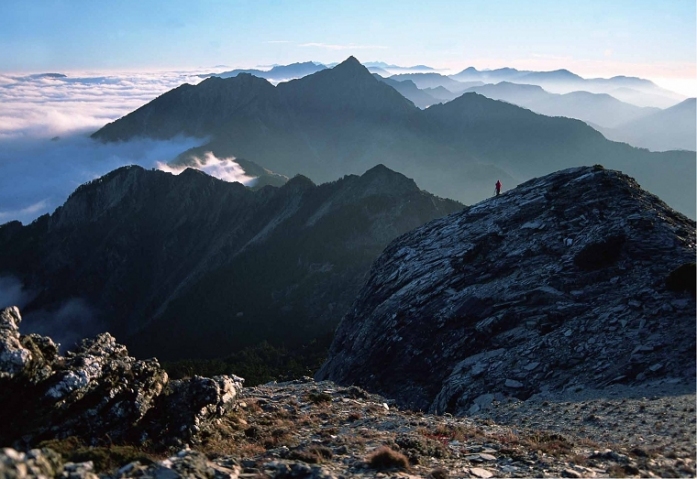
“Every time I return to Taroko, it always feels like coming home,” said George Sheu, a volunteer interpreter at Taroko National Park (TNP).
Fifteen years ago, Sheu started to volunteer out of a need to occasionally get away from his heavy-loaded job in advertising. But this “getaway” has turned out to give him another shelter like home. Confident as he is as a creative advertiser, Sheu feels the powerlessness of humans when facing the ever-changing Nature. So he gave up on the casual manners he first had, and began to take this volunteer work seriously.
Like many national park volunteers who at first were not familiar with ecology-related subject knowledge, Sheu had to learn everything from scratch. Due to his talkativeness, he couldn’t stand just serving the tourists by simply saying hello and giving directions. “Whenever there’s an opportunity, be it an emcee job for a briefing, I’ll do everything to get the audience listen and make them laugh,” said Sheu. “For example, as the briefing room is really cozy and sleep-inducing, I’d joke with the audience about making sure to keep their snores down or to put a coat on those falling asleep.” His humor always makes an impression and attracts more tourists back for more video viewings, which in turn helps Sheu remember all the knowledge and facts shown in the videos.
His first volunteering mission, in which he guided a group of senior policemen receiving in-service trainings at Central Police University, is truly unforgettable to him. Much elder than Sheu in his early 30s, they paid full attention to Sheu’s interpretation and showed friendliness in so many ways that Sheu feels that “all the hierarchy or gap tends to disappear when people meet in the Nature.” “That’s one of the reasons I love to make friends through the Nature as a medium.”
Being an interpreter and tour guide, of course, requires a certain level of professional knowledge about the Nature and ecology. Starting as a layman, Sheu had had a hard time remembering all the facts about the flora and fauna in the high mountain ecosystem or well applying and interpreting them. “At first I just forced myself to remember as much as I could. But this shallow rote was of limited help. Later I told myself to seriously get to know about only 3 to 5 plant species during each of my visit to the mountains. Soon, I’ve remembered so much, and been able to use them at will in my interpreting,” said Sheu.
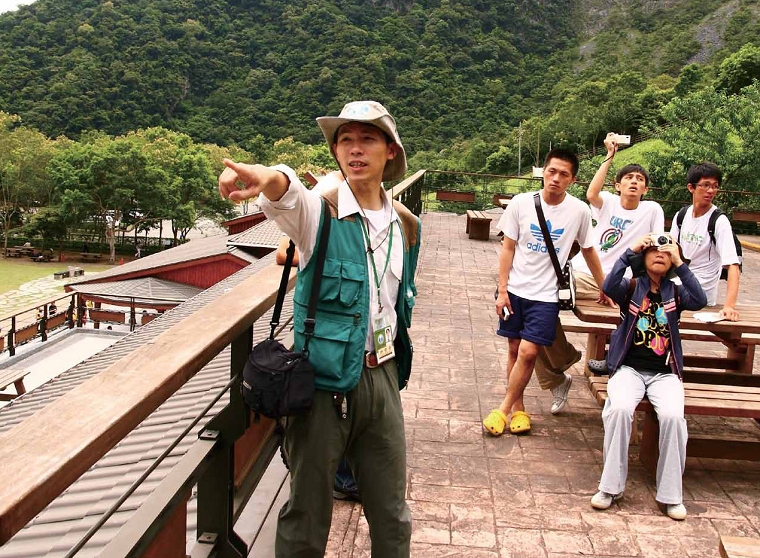
Interview & Text/ Hsin-hua Lian
Photo Provided by/ George Sheu
Translator/ Kuan-yu Ou
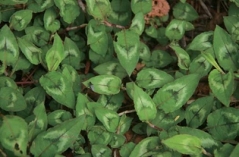
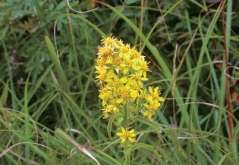
With accumulated knowledge and experiences plus his humor, Sheu has become a creative interpreter. When asked by tourists about the name of a certain plant, he’d first ask them: “What do you think should it be called?” guiding the usually passive tourists to actively observe and come up with some possible good answers.
It’s Sheu’s belief that as long as it’s not for the purposes of serious professional studies, an interpreter should have the leeway to first use simple and interesting names to help tourists know and remember the plants before telling them the actual scientific names. For instance, as the leaf of Chinese Knotweed (Polygonum chinense L.) is featured by a V-shaped burn-like patch, Sheu would tell tourists that the plant is called “Formosan Black Bear Weed” in his own language. This, Sheu thinks, would facilitate a more interesting and impressive learning experience.
To Sheu, he has received more than he has given during the 15 years of his services in TNP, in which he has obtained different experiences through each task or mission of interpreting or routine duty.
“Every time I introduce Goldenrod (Solidago decurrens L.) , whose Chinese name literally means “one single yellow flower,” I’d ask tourists to guess its name. They’d give me all kinds of answers, and feel amazed when I tell them the answer.” This example could serve as a lesson of nature education: When people are used to seeing things in a complicated way, they tend to consider what things “should be,” without realizing how simple a lot of things could be or actually are.
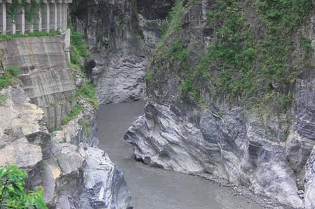
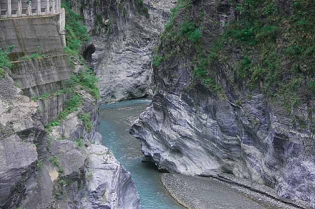
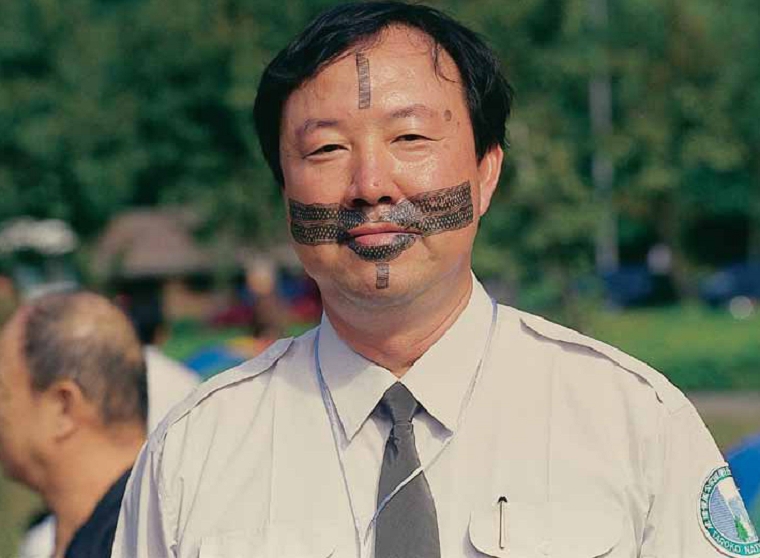
Fifteen years of volunteer work has turned Sheu into a veteran in TNP who has set foot in many places and trails most tourists have never been to in the park. To him, TNP is such an unbelievably large park that so many wonders happened to him, touched him and still await him.
Sheu would never forget the week many years ago when he was in Taroko as a typhoon hit. He walked into Shakadang Trail, and found that a deep pool, which used to be full of water as a great tourist attraction, had turned into a shallow pond almost filled up with pebbles. And all this was made by the typhoon overnight.
Witnessing this huge change, Sheu could never ignore or under-estimate the power of Nature. “During my days in Taroko, I realized the patterns the Nature functions and heals itself, as well as the littleness of humans. It’s really ridiculous when many people are still engrossed in all the fights and desires.”
In addition to the mountains and waters he has worked in, Sheu is also grateful to all the memorable people he has met for what he has seen and learned from them.
Among them, Director-general Shih-wen Yeh of CPAMI was the most respectable as a former director of TNP Headquarters to Sheu. “We as volunteers and staff members were having a trial trip to Old Cross-Hehuan Mountain Road before an expedition event on it. Conditions of the trail were truly bad, with all the weeds and some road abruptions. But the then-director Yeh finished the whole trip in person, so he could know what problems might occur along the way and how to solve them,”Sheu recalled. “Even more impressive was that later when Yeh had to hurry back for a meeting, he just slid down a hillside from Guanyuan Lodge all the way to somewhere 200 to 300 meters lower in elevation. I’ll never forget how daring and dauntless he was at the time!”
Sheu’s life has changed during the 15 years as a TNP volunteer. He quitted his high-paying job of advertising 2 years ago, and has since become a freelance writer and part-time instructor in some universities. Now he earns less, but enjoys more in a self-content life. He hopes to serve as a volunteer in TNP for another 15 years, and another, and then another. The affinity he has built with TNP will always be part of him and his life, and will never end.
![]()
Sheu used to be a veteran advertiser, and is currently a free-lancer. He takes delight in traveling, hiking, photography, writing and exposing himself to the Nature, and has visited more than 20 countries including the U.S., Canada, New Zealand, Tunisia, Oman, and Iran. Sheu occasionally writes articles for newspapers or magazines, and often gives speeches in schools and organizations. He was recruited as a volunteer interpreter at Taroko National Park Headquarters in 1996, and has served for 15 years so far.
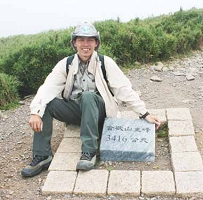


![Text size [Small]](/media/system/images/font_small.jpg)
![Text size [Medium]](/media/system/images/font_normal.jpg)
![Text size [Large]](/media/system/images/font_big.jpg)





